If you’ve stuck around this blog for any amount of time, you’ll have noticed that I have reviewed a truckload of knives. As a consequence of this devotion to sharp objects, I very frequently find myself with nicks and cuts of all sizes (curse you assisted openers!).
Rather than defaulting to using bandages to seal those cuts, I’ve instead found myself becoming very good friends with superglue over the years. I find that I tend to favor using superglue over bandages (or even stitches!) as super glue provides a quick solution that allows me to keep using the limb with the cut with very little discomfort and no (or limited) scarring.
I firmly believe that super glue is one of the best options available for sealing cuts. It’s not ideal for sealing all cuts, but for most cuts that people end up with on a day to day basis (small- to medium-sized straight cuts that were caused by paper, the use of kitchen knives, etc.) super glue does a better job than any of the alternatives.
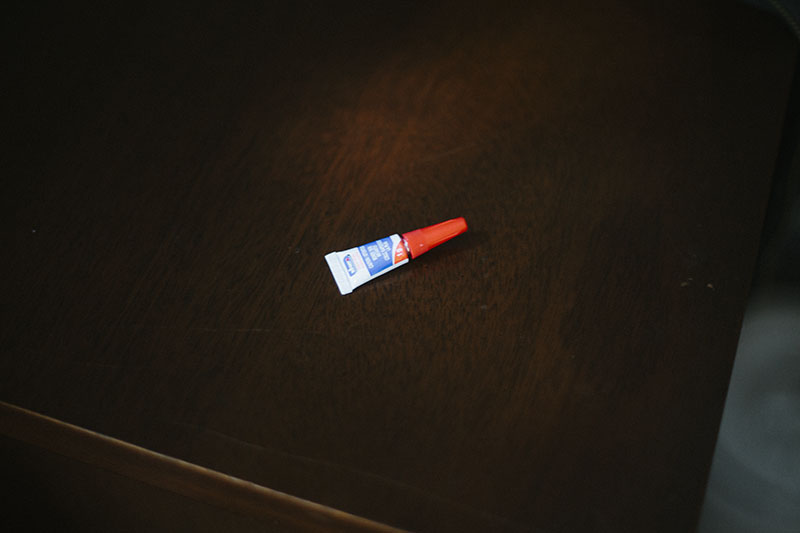
Now I know that there is, quite frankly, a high level of doubt within the general population with regards to whether super glue really works for sealing cuts (let alone with regards to whether it should be used in this way), but I’m here to try to set the story straight. If experience has taught me anything it’s that some genius way of doing something can be lying right under people’s noses and often unless it’s culturally acceptable, people won’t ever bother to try it. I’m almost guaranteed to get glares of confusion (and concern!) when I tell a new person how I sealed the fresh cut I just got yesterday with a bit of super glue. It took me hours to convince my in-laws that this was a perfectly viable way to close cuts, and my grandmother still feels uncomfortable with the idea to this day.
I’m here to tell you that if you’re open to the idea of doing something that goes against the grain when it comes to sealing your cuts shut – you’re in luck, as you’ll find that super glue is pretty much magic in a squeeze-bag when it comes to this. Superglue rocks when it comes to this application, and I’m here to show you why.
And now of course for a disclaimer: just because a (handsome) guy over the internet tells you something is completely okay, doesn’t mean that you’re no longer responsible for your own actions. As with everything in life, the buck stops with you, so do your own due diligence and when in doubt always seek professional advice.
The following article is my opinion only. I am not a medical practitioner and take no responsibility for how you use the information contained within this piece.
A Brief Background on Superglue and Cuts
Superglue is an acrylic based resin called Cyanoacrylate (CA). It is sold under many different brand names, from Krazy Glue to Loctite. It was invented in the 1940s/1950s during the war effort, but found uses beyond being a mere fast acting adhesive during the Vietnam war.
Super glue was originally created in 1942 in an attempt to use the material to make clear plastic sights for the guns being used in the war. Cyanoacrylate failed at this purpose because it was just way too sticky. But while it is a myth that super glue was originally invented as a way for soldiers to close their wounds on the battlefield – it does seem to be true that, historically, super glue was re-appropriated to be used in such a way. It seems the soldiers in the Vietnam war were often patched up using super glue, though by medics and not the soldiers themselves, and only in order to stop the bleeding long enough to carry the wounded away.
The primary advantage of super glue is that it works fast (instant glue is a well deserved moniker). It also creates an impermeable seal that is resistant to the environment (including water) and leaves behind little to no scarring.
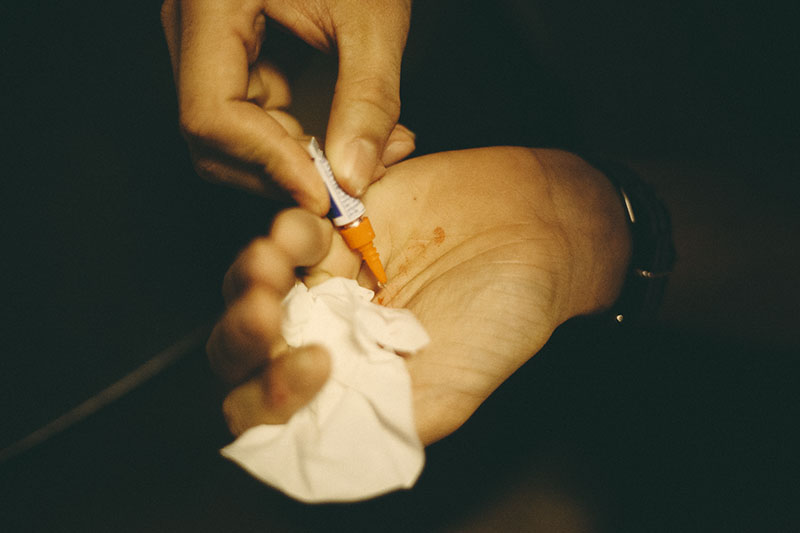
What Kind of Superglue Can Be Used to Seal a Cut?
Super glue is a common term to describe a household adhesive. The medical stuff is quite a bit different and spawned due to two significantly adverse side effects;
- When applied, the glue creates a exothermic reaction (basically heat) when curing; this can damage the surrounding tissue and make the situation worse.
- The curing processes releases cyanoacetate and formaldehyde, which irritate the eyes, lungs, throat & nose.
As a consequence of these side effects, new adhesives were invented to minimize these reactions that are designed expressly for medical and surgical uses. They come in 2 common compositions from different manufacturers, but all have increased strength, generate far less irritation when used on skin, and are much superior when it comes to flexibility – which as you can imagine is quite useful!
The two medical grade super glues are:
1. 2-octyl cyanoacrylate (rated for the closure of wounds and surgical incision and as a barrier against common bacterial microbes)
- SurgiSeal
- FloraSeal
- Dermabond (probably the most ubiquitous one)
- Derma+Flex
2. n-butyl cyanoacrylate (Very similar to 2-octyl but less rigid, more flexible, and consequently not as strong)
- Liquiband
- Indermil
- GluShield
- GluStitch
- Histoacryl
- Periacryl (as a dental adhesive)
These 2 types of medical grade superglue should really be the ones you use for medical applications. “Regular” super glue – like Krazy Glue or Loctite (methy-2-cyanoacrylate or ethyl-2-cyanoacrylate) are not designed for with medical application in mind, and thus the previously discussed side effects, as well as greatly reduced flexibility, make them an inferior choice for sealing cuts.
I will say, however, that I have used regular Krazy Glue with no issues, but that was my decision and I would not recommend it, especially since the medical stuff is so easily available. If you want to do things on the cheap, you can always use the veterinary equivalents (Vetbond, LiquiVet, Surgi-lock, Nexaband, etc.).
With that said, if you have nothing else around, and that cut needs to be sealed, I wouldn’t be too worried about using a dab of Krazy Glue.
When Should You Use Super Glue to Seal a Cut?
You should use super glue instead of bandages when you have shallow lacerations/cuts. If your cut is under 3/4 of an inch in length, it might be fine to use super glue – any more than that, you should take a pass on trying to use super glue. You should use super glue only if the flow of blood is minor. If you’re bleeding a lot, you probably shouldn’t risk it if there are alternatives around.
Paper cuts and light cuts from sharp knives are the best candidates for super glue over the use of band-aids. The small cuts typically heal completely over the span of 24 hours.
Also use super glue only when you are comfortable doing so. If you are worried you won’t be able to super glue your cut properly – say your hands are shaking or you just don’t feel confident you’ll be able to do it by yourself – pass and use a bandage or stitches, or seek medical help from a professional instead. Don’t ever do anything you’re uncomfortable with. Cuts can get infected and infected cuts are dangerous.
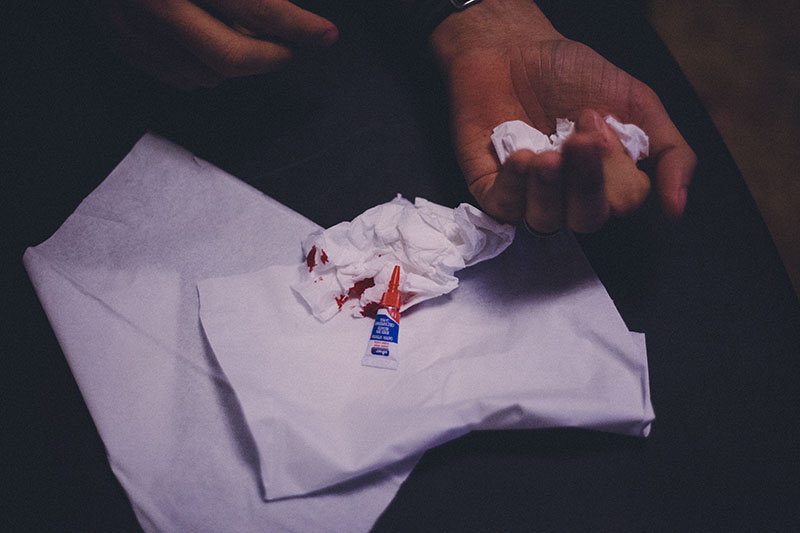
When Shouldn’t You Use Super Glue to Seal a Cut?
This will be controversial because I use super glue to seal wounds that are much larger than recommended by medical professionals, but I will suggest you follow official guidelines – which are basically to only use super glue on cuts less than 5 cm long and that happen to be straight. Jagged cuts or tears, like the types often made by falling or cutting yourself on a dull knife, are not viable for sealing shut with super glue, therefore, as per official recommendations.
According to the medical guidelines, you should also never do the following;
- Never use super glue on your face.
- Never use super glue anywhere near your eyes.
(Seriously, don’t do this.) - Never use super glue on deep wounds.
(I have used it for somewhat deep wounds, but your mileage may vary and it may not be wise; always err on the side of caution and don’t take risks you don’t need to take.) - Never use super glue on wounds that are bleeding.
(I frequently use super glue whilst the wound is still bleeding and while it works fine, it’s very messy. It’s difficult to get around blood if there’s a lot of it. Would not recommend trying, but I did want to mention that I have done this successfully many times before.) - Never use super glue on wounds that are over joints or body parts that flex.
(This would very likely cause the super glue to come off, and for the cut to re-open.) - Never use super glue on infected wounds.
(Never ever do this! If your cut is infected, you’re just sealing in the infection, meaning you will very likely get sick. Make sure to disinfect your wound before using super glue. Super glue is not a replacement for disinfectant!) - Never use super glue on wounds as a result of an animal or insect bite.
(As they would likely be infected. See point above.) - Never use super glue on puncture wounds in general.
- Never use super glue on dirty or unclean wounds.
(Again, because of the possibility that the wound is infected; here’s how you clean a wound).
I would also recommend that if you work in an unsanitary environment or an industrial park to simply pack the wound with Vaseline or other soaked dressing and go to a medical facility to get it professionally cleaned and sealed should it require it. Don’t take chances with cuts. Infections are serious and what looked like an simple scrape that would heal in no time could go awry if you do end up getting an infection.
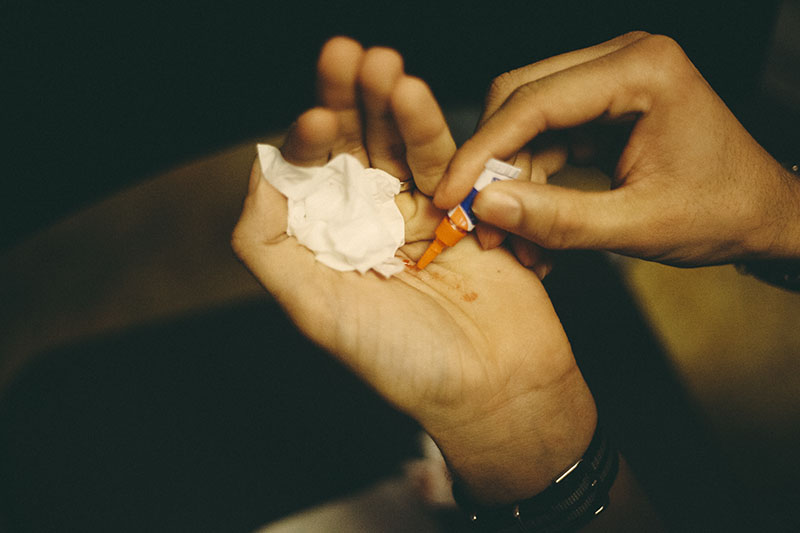
Guide to Using Super Glue
- First and foremost, always irrigate wounds and use a disinfectant (alcohol works) before sealing with medical glue. You really don’t want to trap all sorts of nasty things inside what is essentially an acrylic bubble with direct access to your bloodstream. Check out my full article on infected cuts for a refresher of the signs of infection and why you should be super careful from the start; infection is no joke.
- Make sure the cut is an ideal candidate for super glue (see sections “When Should You Use Super Glue to Seal a Cut?” and “When Shouldn’t You Use Super Glue to Seal a Cut?” to figure out how – and if you haven’t yet read them cause you were skimming – tsk, tsk!!)
- Proceed to wait until bleeding has subsided by applying pressure around the wound. If the wound is acting like a faucet, it’s a pretty good sign that you need to get to a hospital to get a doctor to patch you up ASAP with some stitches! Otherwise, if the bleeding subsides, proceed to the next step.
- Gently bring the wound closed without using excessive pressure. Essentially, use a delicate pinch. A natural seal is all that is required, so don’t get crazy and clamp down to the point of bruising. I mention this because I have seen a friend overdo the pinching “to make sure nothing gets in.” Not a good idea and definitely not needed.
- Apply a thin layer of the superglue and wait for the super glue to cure. This will create an impermeable layer above the wound. If you add too much glue too quickly, the super glue will take a longer time to cure, and that’s really not ideal. So again, thin layer and don’t overdo it. You can always add a little more if it’s needed (though it probably won’t be).
- Release your pinch and go grab a cold beer.
- Don’t be an idiot like me and try peeling off the super glue yourself. Wait for the super glue to fall off naturally. And it will. You just have to be patient (unlike me!). Scratching away at the top layer of superglue is a terribly bad idea because you’re running the completely unnecessary risk of re-opening the wound, potentially getting it infected, and then needing to start the process of disinfecting and sealing all over again (guess how I know!).
Things to be Wary of When Using Super Glue to Seal Cuts
- I have sometimes had blood trapped under the seal of superglue turn black and look pretty damn unappealing. It will go away by itself. Our bodies are pretty resilient, but if you notice any pain and/or discomfort please go to the E.R.!
- Sometimes the wound channel leaks at the end with little droplets of blood. I usually just wait for the bleeding to subside and then add a dab of superglue.
- Slow and steady wins the race. Don’t pour half the tub of glue just because you think it will help – it won’t. Less is more. It’s better to apply a little bit of super glue at a time and wait for the super glue to dry into a solid seal. Sometimes you will add too much accidentally because you’re nervous – refrain from adding more as it will only make matters worse (make it take more time to cure/dry and seal properly). I am guilty of sometimes putting on too much super glue and it really just makes your job harder.
- A times, for whatever reason, the wound starts to bleed again after you’ve put on super glue, and somehow mixes with the still curing super glue. It will look messed up, but in practice, this is pretty much harmless. Just let it set and don’t scratch at it, and the super glue will fall of harmlessly.
- With regards to scars, having used super glue to seal over 50 cuts in the past 4-5 years alone, the only scars that I have are actually from stitches.
- If you ever need to remove superglue for whatever reason, you can use acetone (nail polish remover) to do this. Remember that acetone is an irritant (putting it on your cut will sting) so try not to get yourself in this situation in the first place.
- This may sound obvious, but watch your fingers after using superglue. It’s pretty common for people to rub their eyes without thinking and, needless to say, the consequences can be dire.
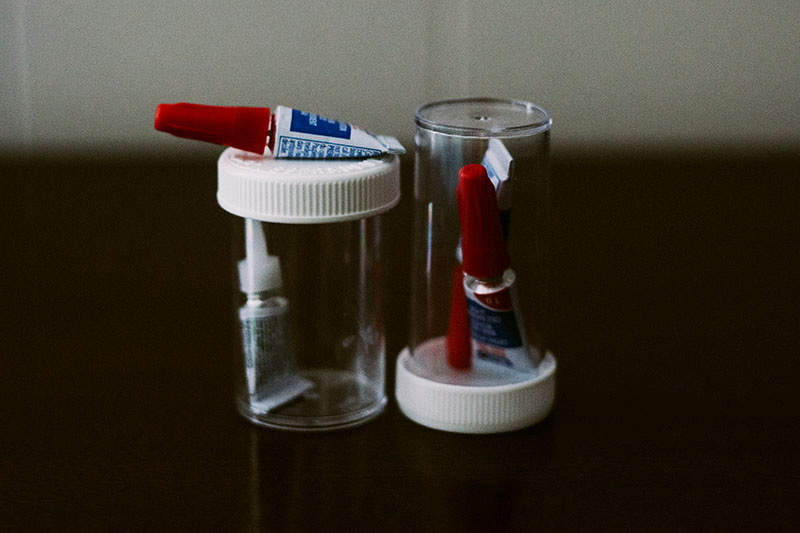
As always do your own due diligence and know your own limits with regards to comfort threshold. I never recommend for people to take action (especially the medical kind) when they are not comfortable. There is nothing wrong with deciding that you can’t handle something and going to the pros. There is something wrong with powering through your discomfort and ending up in a bad situation you wish you’d never gotten yourself into.
Just because I sometimes using regular superglue on relatively deep cuts doesn’t mean its a good idea. As a matter of fact it’s probably a very bad idea. So please take what I write with the due context – just because some things work doesn’t mean they’re ideal – do your best to stick to what’s medically vetted and refrain from putting yourself at risk unnecessarily.
If possible, get someone to help you. It’s much less messy if you have a second person there to apply the super glue for you (especially if the super glue is on your dominant hand/arm), and they often can apply the glue much more accurately than if you were doing it yourself.
Super glue is a fantastic medical resource for cuts, but while it is a little bit of magic goodness, it’s certainly not a magic bullet. Take your time. Evaluate the condition of your wound and realize it’s not ideal in all cases. Opt for stitches if bleeding does not subside or the wound channel is just too jagged to be safe to seal shut with medical grade super glue.
More First Aid Resources
When it comes to first aid, you need two important things to help you on your quest to keep yourself and those around you safe & healthy: knowledge and (to a lesser extent) supplies. To tackle the prior, take a look through our list of the top 22 emergency & survival first aid books and grab those that you think will best help you gain the knowledge you’ll need. For the latter, take a look at our Ultimate First Aid Supplies List to see if there’s anything you should be adding to your at-home first aid supplies stockpile, or if there’s something you’ve forgotten to add to one of your first aid kits.
Do you know how to tell if a cut is infected, whether to use Advil, Tylenol, or Aspirin, and how to quickly assess and address emergency situations? Did you know you that Imodium is an excellent tool for survival?
Want even more? Quickly browse through the first aid articles we’ve published on this blog, to see if there’s anything valuable you’ve yet to learn on the topics we’ve written about.
A nurse showed me how to put s-glue on “fissures” cracks in my fingers and hands, and I’m still doing this. This morning I sat at the breakfast table, put an extra paper towel on it, then used s-glue on at least a half dozen places on both hands. I wiped excess of w/ a few pieces of paper towel, leaving nice shiny s-glue places on my thumbs and fingers. the sting went away, and all i have to do is gently blow on my fingers and wait for s-glue to dry. Nice! I’m handicapped, so, if YOU see my email in my note, will you email me more info? it says when making this note that my email won’t be seen, but do YOU see my email? Have a Blessed day!
Now that you’ve told me it’s ok to use super glue, I am no longer responsible for my own actions. That said, I like your blog as I read it while suffering a small slice in my finger. Suffered from sharpening a friends “Miracle Blade” cleaver that I had to recreate an edge to, because some one gouged it up fairly deep somehow. Anyway edge is back to normal, very sharp once again (took a few days), ask my finger. On the stroke of a stone, my finger decided it wasn’t moving out the way. So the razor sharp edge I was creating, made an attempt to use my finger as a sharpener. It didn’t work, applied pressure since it was bleeding pretty good, elevated above my heart on my way to the bathroom (I wear contacts), assessed while rinsing and bleeding, no debris so bandaid went on (I bought a box of 100 about a week ago). As I finish and regain consciousness from blood loss (dumb humor), I saw the “Gorilla super glue gel” I just bought also. Now, here I am commenting after reading this valuable information, about to take off bandaid, rinse, repeat, then apply some super glue gel. One question I must ask though out of partial stupidity mixed with lame attempt at comedian skills which I don’t really have; question: If my a$$ was greasy, would a huge amount of super glue help shut that down? You’ve inspired me to find new medical uses for super glue, so just a thought since duct tape didn’t really seem to work?. Thanks for your information, I love bladed weapons also so I’ll be checking out your other posts regarding that as well. Have a great day!??
Haha,I take zero liability- just sharing my experience. ;) Have a great day too.
I recently used New Skin on a raw blister and am amazed at how quickly it healed. Even though I heard about glue for cuts years ago, it’s taken me to age 83 to use it and discover how great this stuff is. I also used it on a seriously bleeding 1″ cut on my ankle, which is still healing but looks great. Both injury’s, same project(:
Good to hear! Thanks for dropping by David!
If you super glue a wound that needed stitches. Will skin grow under the glue to replace the glue. Ive been reading online and some people stay the top layer will not heal with glue.
long term, new growth will push out the glue. With that said, if its a serious wound I would use butterfly strips or get stitches just in case!